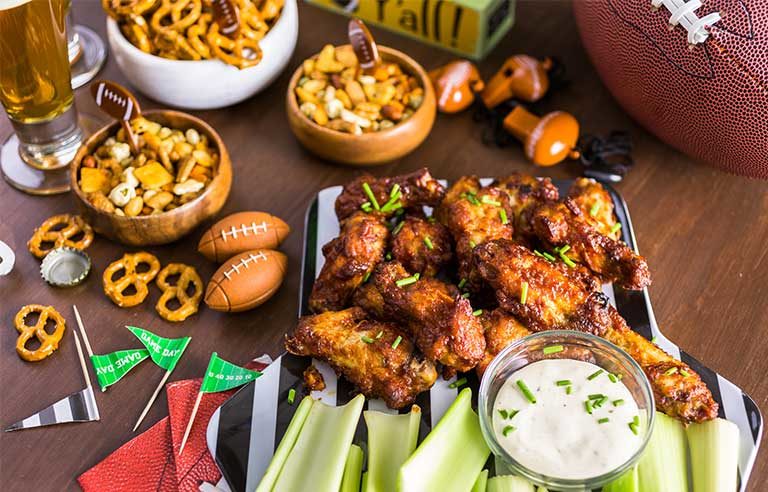Don’t be sidelined by foodborne illness on Super Bowl Sunday

Washington — Millions of fans will gather around their TVs on Feb. 13 for Super Bowl LVI – and chances are good they’ll indulge in a culinary spread fit for football’s biggest game of the season. But the U.S. Department of Agriculture is reminding hosts that guests could get sacked by a foodborne illness if proper safety precautions aren’t taken.
Rather than letting perishable foods such as chicken wings and deli sandwiches sit out at room temperature for more than two hours (the USDA’s recommended window for food safety), put out small amounts of food and replenish frequently. This reduces the risk of bacteria growth, which can occur rapidly in food between 40° and 140° F. The USDA refers to this temperature range as the danger zone.
The department recommends four steps to achieve food safety:
Clean: Wash your hands for 20 seconds before and after handling raw meat and poultry. Clean hands, surfaces and utensils with soap and warm water before cooking and after contact with raw products. After cleaning surfaces that raw meat and poultry touched, apply a commercial or homemade sanitizing solution (1 tablespoon of liquid chlorine bleach per 1 gallon of water). Use hand sanitizer that contains at least 60% alcohol.
Separate: Use different plates, utensils and cutting boards to avoid cross-contamination between raw meat or poultry and ready-to-eat foods.
Cook: Make sure foods are cooked to a safe internal temperature by using a food thermometer. Whole beef, pork and lamb should be at least 145° F (with a three-minute rest), the same temperature as fish and shellfish. Ground meats are safe at 160° F, and poultry (ground and whole), leftovers and casseroles should be cooked to 165° F.
Chill: If foods aren’t being consumed within two hours, chill them after cooking.
Other game day recommendations:
- When cooking chicken wings, test several of each batch to determine if they’re at a safe temperature. If one is below 165° F, continue cooking the entire batch until all reach the desired temperature.
- Keep cold foods at 40° F or below by refrigerating them until serving or keeping them on ice while they’re being served to guests.
- Leftovers cool faster in small batches, so divide them into small, shallow containers rather than large containers.
- If you’re serving takeout food, keep it warmer than 140° F by using a preheated oven, warming tray, chafing dish or slow cooker.
“No matter who you’re rooting for, foodborne illness is a dangerous opponent we face during the game,” Agriculture Secretary Tom Vilsack said in a press release. “Following guidance on keeping food at safe temperatures, proper handwashing and avoiding cross-contamination will protect you and your party guests.”
Post a comment to this article
Safety+Health welcomes comments that promote respectful dialogue. Please stay on topic. Comments that contain personal attacks, profanity or abusive language – or those aggressively promoting products or services – will be removed. We reserve the right to determine which comments violate our comment policy. (Anonymous comments are welcome; merely skip the “name” field in the comment box. An email address is required but will not be included with your comment.)
